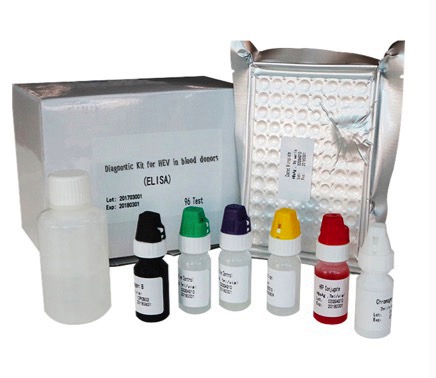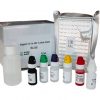for HBV NRAg
The hepatitis B virus particle is composed of outer membrane proteins (S protein, pre-S1 protein, pre-S2 protein) and the core-shell. The HBV pre-S1 and core antigens are not only markers of HBV infection, but also of viral replication, and they are highly correlated with the amount of HBV DNA, collectively known as hepatitis B virus nucleic acid related antigen (HBV)
for HBeAb
After treatment, in the recovery phase following acute hepatitis B, HBeAg is the first serological marker that becomes negative and is replaced by the corresponding antibody (anti-Hbe). The presence of anti-HBe in blood is recognized to be a clinical sign of recovery from the infection.
for HBeAg
The “e” antigen is a viral protein associated with HBV replication, indicating a high degree of infectivity of the tested individual. In chronic Hepatitis B infections, elevated levels of HBeAg can be detected for years, which is a marker for a high viral load.
for HIV
Serological evidence of infection with HIV may be obtained by testing for presence of HIV antigens or antibodies. Antigens can only be detected during both the acute phase and the symptomatic phase of AIDS. The antibodies however, can be detected throughout virtually the whole infection period, starting at, or shortly after the acute phase and lasting, untill the end stage of AIDS. Apart from sexual transmission, the principal route of infection with HIV is blood transfusion. Therefore, all donations of blood or plasma should be tested due to the risk of HIV transmission through contaminated blood.
for HTLV
The human T-cell lymphotropic viruses (HTLV) is a member of the family of Retroviridae, consisting of enveloped double stranded RNA viruses and genetically not related to HIV1&2; however, they have similar routes of transmission and can have extremely long period of latency prior to manifestation of disease. HTLV type 1 was reported in 1980 as the first retrovirus shown to be pathogenic to humans. HTLV 1&2 is transmitted transplacentally, parenterally, by sexual contacts and by infected blood. The diseases associated with HTLV infection are usually classified as malignant or nonmalignant clinical presentations. HTLV 1 is endemic in southern Japan, the Caribbean and the US and many other scattered population through the world. HTLV 2 is endemic in some North American Indian tribes but is detected mostly in intravenous drug users and their sexual partners.
for HEPATITIS B
HBV is an enveloped, double-stranded DNA virus belonging to the Hepadnaviridae family and is recognized as the major cause of blood transmitted hepatitis. Classification of a HBV infection requires the identification of several serological markers expressed during the three phases (incubation, acute and convalescent) of the infection
for HBsAg
HBsAg is the most important protein of the envelope of HBV. Four HBsAg subtypes have been identified (adw, ady, ayw, and ayr). HBsAg can be detected 3 to 5 weeks before the development of symptoms. The serological detection of HBsAg is a powerful method for the diagnosis and prevention of HBV infection and for screening of blood donors.
for Anti-HBc
Anti-HBc is a marker of acute, chronic or resolved HBV infection.In clinical diagnosis, the detection of anti-HBc is an important marker for diagnosis and management of disease. In the absence of other HBV markers (HBsAg-negative persons), anti-HBc may be the only indication of an existing HBV infection.
for HBcAb IgM
HBcAb IgM Antibodies to HBcAg are produced shortly after the appearance of HBsAg and persist for life both in persons who have recovered from a Hepatitis B infection and in those who develop HBsAg carrier status. In chronic hepatitis, however, spikes of anti-HBc IgM synthesis can be observed, confirming reactivation of HBV in hepatocytes and giving origin to permanent low titers of IgM.
for HBsAb
During the acute phase of hepatitis B infection, increasing titers of HBsAg neutralizing antibodies are a marker for recovery. The absence of anti-HBs indicates susceptibility to HBV infection.
for HCV
HCV, Indirect ELISA (3rd Generation)
An indirect ELISA,a two-step incubation procedure. During incubation, HCV antibodies will be bound to the pre-coated HCV antigens. Anti-human IgG antibodies conjugated to the enzyme HRP are then added. These HRP-conjugated antibodies will bind to any antigen-antibody complexes. Chromogen solutions are added and the colourless Chromogens are hydrolyzed by the HRP to a blue-coloured product. The intensity of the colour is proportional to the amount of antibodies captured in the wells.
HCV, Sandwich ELISA (3rd Generation PLUS)
Anti-HCV 3rd generation PLUS is based on the double antigen “sandwich” ELISA principle. This novel method for the testing of HCV antibodies allows detection of very early antibodies, including IgM and IgA in addition to the IgG which is the main target for detection of the previous generation assays. In addition, the method minimizes the non-specific reaction observed to occur with other methods and thus its utilization increases the specificity in detection.
for HEPATITIS C
Hepatitis C can progress both with an acute and a chronic form, however, more than 50% of the infected individuals develop severe, life threatening chronic hepatitis with liver cirrhosis and hepatocellular carcinomas.
Since the introduction of anti-HCV screening of blood donations in 1990, the incidence of this infection in transfusion recipients has been significantly reduced. The first generation of test showed limited sensitivity and specificity and were produced using recombinant proteins complementary to the NS4 region of the virus as antigens. Second generation tests, included recombinant / synthetic antigens from the Core and non-structural regions NS3 and NS4 which resulted in a remarkable improvement in sensitivity and specificity. The third generation tests include antigens from the NS5 region of the viral genome in addition to NS3, NS4 and the Core.
for HEV In Blood Donors
Hepatitis E is caused by infection with hepatitis E virus (HEV). Hepatitis E is a waterborne disease and contaminated water or food supplies from a single source can lead to major outbreaks in developing countries.
HEV causes acute sporadic and epidemic viral hepatitis. Symptomatic HEV infection is most common in adults aged 15-40 years. Occasionally, a severe form of hepatitis develops, with mortality rates ranging between 0.5% – 4.0% of the overall population. This severe form of hepatitis may reach a mortality rate of 20% during pregnancy in the 3rd trimester.



